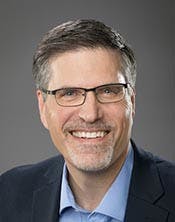Everything We Thought We Knew About Age & Innovation Is Wrong
This article is based on the TEDx talk “Innovation Has No Expiration Date,” which Mark Anderson delivered at the University of Nevada in March 2019. You can watch a recording of the presentation here.
When some of Silicon Valley's best and brightest make statements like “Young people are just smarter” (Facebook CEO Mark Zuckerberg) and “People over the age of 45 basically die in terms of new ideas” (venture capitalist Vinod Khosla), it reinforces the belief that the only way we are ever going to solve our country's growing technical talent gap is an all-out blitz aimed at funneling America's youth into STEM training programs, coupled with workplace cultures heavily geared toward attracting and retaining young innovators.
But what if everything we thought we knew about age and innovation was wrong? A growing body of research shows that innovation actually gets better with age. This research prompts us to develop a more inclusive and sustainable innovation paradigm that could be a game changer for the way we address our country's growing talent crisis.
Demographics Don’t Lie
U.S. Census data shows that 40% of Americans are now 45 years of age or older. Compare that to only 34% in the 20–45 age range, and it becomes abundantly clear that we don't have enough people in their so-called innovative prime to shore things up.
Moreover, the 20–45-year-old group is shrinking. In 2017, the U.S. birth rate fell to a 30-year low, with families now having only 1.7 children per household, far below the replacement rate of 2.1 needed to keep the population steady. Consequently, by 2030, there will be more people 65 and over than 18 and younger for the first time in U.S. history.
So if we are banking on the youth of America to save the day, we're in big trouble, because the numbers just aren't there. The good news is that our population of workers 45 and older is 120 million strong. And they are far more capable than we're currently giving them credit for.
Innovation Favors the Old
It was previously thought that the optimal age of innovators increased by about six years every century. But now we are seeing that happen in a third of the time. The Kauffman Foundation, which studies these trends, asserts that the prime age for innovation is now between 55 and 64 years old, and continues to trend upward.
Why is this? For one, older Americans have increased lifespans and improved physical health, making it possible for them to continue contributing until a ripe old age. Many have also reinvented their careers multiple times, making them relentless innovators who seek out and embrace change.
On the other end of the age spectrum, the technology that is often invoked as the hallmark of youth has ironically stunted the innovative maturity of many of our talented young people. Those going into research are finding they need to stay in school much longer to gain the knowledge necessary to make significant contributions in their chosen fields. Add to that easy answers at the push of a button, overprotective parenting, and communication without interpersonal interaction, and you find the roots of the fear of failure and unrealistic expectations many young people struggle with.
The bottom line is: We've never needed our older innovators more than we need them now, not just to fill our technical talent gaps, but to provide meaningful mentorship and encouragement for the rising generation.
Retooling Innovation
To change the industry dynamics surrounding innovation, the first thing we need to do is realize that our innovation paradigm is hopelessly broken and to stop behaving accordingly. Given what I just shared, how much sense does it make for us to stand around talking about the lack of qualified millennials and then hand pink slips to most Americans over 50 — just when they're hitting their innovative prime?
Second, we need a better paradigm. In building this paradigm:
- It's incumbent upon corporate America to make a study of innovation centers as models for creating age-inclusive workplace cultures. People of all ages need to be able to come together to build new businesses, incubate ideas, and learn from others.
- Government, industry, and education leaders need to partner together to find ways to harness the power of our greatest innovation generation, such as public-private partnerships to fund rigorous STEM training for seniors.
- There needs to be a call to action for HR leadership across the country to change the way America's boardrooms marginalize older innovators and to enact “work-life fusion benefits” such as senior sabbaticals, remote work options, and paid time off for the birth of a grandchild.
The Future of Innovation
I have a vision of the future where innovators will start and lead world-changing companies well into their 70s and 80s. Where 17 and 71 year olds sit side by side in STEM training classes, and where people of all ages work together to build a brighter future. Where it's never too late to innovate and innovation has no expiration date. That vision makes me excited for the next 30 years of my career. I feel like I'm just getting started. And I hope that, regardless of age, you feel that way too.
Mark Anderson
Mark Anderson is Director Nevada Industry Excellence, part of the MEP National NetworkTM, where he continues his career passion of strengthening the manufacturing industry and economy by advancing the skills and knowledge of employees. The first U.S. employee for Panasonic Energy, a partner in the Tesla Gigafactory, Anderson helped shape the Gigafactory’s innovative and collaborative culture.





